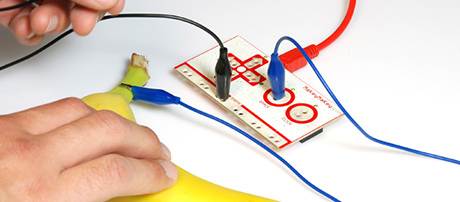by Yasemin Allsop
Since coding has been included in the curriculums of many countries in recent years, there are many programs and apps that have became available for teachers to use for teaching computational concepts. It is clear from my conversations with class teachers and interactions in online communities that many of the educators are now aware that facilitating learning when children are coding is more than just providing them with an instruction sheet. Teachers around the world are exploring ways of introducing Computer Science (CS) concepts and approaches to children in a fun and interactive way.
Physical computing where CS meets electronics became very popular amongst educators who wanted to provide a space for their learners to explore computational ideas in a creative way supported by constructionist approaches. Physical computing simply refers to interacting with physical systems or objects from the physical world using programming. One of the most important benefits of physical computing is that it allows children to see how physical devices can be monitored and controlled by a microprocessor. Furthermore, it provides educators with a unique opportunity to integrate activities that will support learners to develop their skills and knowledge in many disciplines. This approach of connections between different curriculum, disciplines, knowledge and practice would surely provide learners with a more authentic and in-depth understanding.
So the questions that we should especially discuss with our learners are:
How do we interact with computers?
The examples of this can be found in our daily lives. How we use a remote control to select the programs we watch on TV, selecting the correct settings for the clothes by programming a washing machine, how we operate a lift and so forth. This also helps children to see that computers are not just desktop PC’s.
How computers interact with the physical world around them?
When discussing this question it is important to start with input and output devices as computers wouldn’t be able to interact with the world without these. One of the more interesting examples for me is motion sensing-lights. Many times when we did not move around, the lights where I teach suddenly switched off. Then we start running and jumping around to switch them on. It is quite funny especially when your students are adults. There are many devices that are available, such as Raspberry Pi, that would allow you to design your own motion sensor.
Some tips for planning and teaching Computing Lessons including Physical computing
When planning and teaching computing lessons there are some important elements that should be considered. It is important to remember that how good our teaching will be, depends on how well the lesson was planned. We need to make sure that we look at each learning situation individually and structure our activities to meet the needs of our learners. This includes supporting not just those who need extra support to complete their tasks and meet their objectives, but also for those who exceed their targets and will benefit from undertaking extended learning opportunities. Below is some brief information about some principles that we should follow when planning and teaching effective computing lessons.
Having a secure subject knowledge, not just of what has been taught, but also the tools that are used is vital. Experimenting with the tools that will be used during the sessions, just like children, will help teachers to understand the thinking and learning process that children go through and identify any issues or misconceptions in advance.
Being aware of pedagogical approaches that work well in different situations especially when learning with, through and about technology will support teachers to adopt appropriate teaching strategies. This will also be useful for teachers to analyse the role of the learners and how this relates to the role of the teachers as learning will be shaped through the students’ interaction with their peers, tools and teachers.
Designing learning experiences that provide opportunities for the learners to develop and apply transferrable skills such as problem solving, creativity, communication, critical thinking, collaborative work and technology skills. These skills can aid the process of developing deeper learning that can prepare students for more complex learning situations and their future life.
Adopting a flexible learning space approach for children to be able to move around and discuss their works with their peers. After many years observing children during technology lessons, we found that they enjoy talking about their work and finding out what others are doing. It is important to allow the children to move around and discuss their friend’s work, make suggestions or ask for help. This would help the students to feel comfortable within the learning space, rather than being restricted which can be very motivational. It would also help them to evaluate both theirs and their friends’ work, which would help them to monitor their own learning.
Focusing on cross-curricular learning where possible. Planning and teaching computing in a context that is relevant to the children’s learning in other subjects will make learning more engaging and memorable. It is useful to create a cross-curricular idea map to help you with planning.
Ensuring that health and safety regulations are followed. When using tablets in class and other physical systems that may require a different arrangement and management of the classroom. For example we need to consider issues with when plugging Raspberry Pi’s or Makey Makey’s or any other tools and how we would handle them.
E-safety issues and how these would be integrated into a lesson need to be clearly identified. We believe that E-safety should be included in every lesson to emphasise the specific concerns related to the topic studied. If children are learning about blogs then online safety can be discussed as part of the session so that the children will remember it when they work on their blog. Teaching about the dangers of the Internet and how to manage its risks in a context will help students to learn to use technology in a responsible way.
List of devices that can be used for physical computing
There are so many devices that are already available on the market and every day I see a new device on indiegogo.com. It is very difficult to decide which one is actually suitable for your class. I think that there are couple of points that might help you to decide before investing in one of these.
- Cost
- Does it have a scheme of activities to start with
- Any examples videos of how it can be used in lessons?
- Is it appropriate for your purpose?
- Can it be used in groups, as purchasing one for each student can be very expensive?
- Does it allow you to combine concepts from different subjects?
- Does it provide possibilities for creative thinking and design? Creating pre-set designs from an instruction sheet is not going to provide a rich learning experience.
Makey Makey
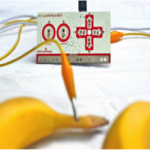 Makey Makey is a device that means we can make our own input devices for the computer, for example you can replace the arrow keys on the keyboard with bananas. It is important to discuss what property does the banana and the people have that makes this possible?
Makey Makey is a device that means we can make our own input devices for the computer, for example you can replace the arrow keys on the keyboard with bananas. It is important to discuss what property does the banana and the people have that makes this possible?
Cost: Around £40 – £50 each
Website: http://www.makeymakey.com
Arduino
 Arduino is an open source platform consisting of a programmable circuit board and software that allows you to write and upload your code to the circuit board. It is great for science and electronics projects. Arduino Integrated Development Environment (IDE) based on C++.
Arduino is an open source platform consisting of a programmable circuit board and software that allows you to write and upload your code to the circuit board. It is great for science and electronics projects. Arduino Integrated Development Environment (IDE) based on C++.
Cost: Around £20 each
Website: https://www.arduino.cc
Crumble
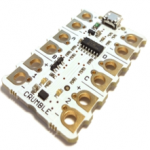 Crumble is basically a programmable controller. It drives 2 motors forward and backwards at variable speeds, which makes it perfect for creating cars and robots. It also has 4 input and output pads that allows you to work on projects using switches and LEDs. The Crumble software is inspired by Scratch and it works on PC, Mac or Linux environment.
Crumble is basically a programmable controller. It drives 2 motors forward and backwards at variable speeds, which makes it perfect for creating cars and robots. It also has 4 input and output pads that allows you to work on projects using switches and LEDs. The Crumble software is inspired by Scratch and it works on PC, Mac or Linux environment.
Cost: Around £22 each
Website: http://redfernelectronics.co.uk/crumble/
Micro:bit
 Micro:bit is a compact programmable computer. It has motion detector, LED display, built-in compass and Bluetooth technology. It has its own software that can be accessed via PC or tablets.
Micro:bit is a compact programmable computer. It has motion detector, LED display, built-in compass and Bluetooth technology. It has its own software that can be accessed via PC or tablets.
Cost: Around £20 each
Website: http://microbit.org
Raspberry Pi
 Raspberry Pi is a credit card sized computer that allows you to learn programming through fun projects. It promotes Scratch and Python programming languages and also includes a special edition of Minecraft. Their website has amazing activity plans that can be used for teaching students at all ages.
Raspberry Pi is a credit card sized computer that allows you to learn programming through fun projects. It promotes Scratch and Python programming languages and also includes a special edition of Minecraft. Their website has amazing activity plans that can be used for teaching students at all ages.
Cost: £35 each
Website: https://www.raspberrypi.org
Sphero sprk+
 Sphero sprk+ is a small robot that promotes creativity and curiosity through projects such as mimicking the solar system, programming a painting etc. It has a space called Lightning Lab where you can collaborate with users around the world.
Sphero sprk+ is a small robot that promotes creativity and curiosity through projects such as mimicking the solar system, programming a painting etc. It has a space called Lightning Lab where you can collaborate with users around the world.
Cost: Around £100 each
Website: http://www.sphero.com/sprk-plus
Dash and Dot
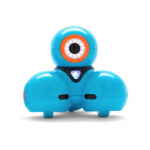 Dash is a robot that responds to voice, dancing, singing and navigating objects. You can use Wonder, Blockly and other apps to program Dash to do different things. With the xylo app you can program Dash to play a song.
Dash is a robot that responds to voice, dancing, singing and navigating objects. You can use Wonder, Blockly and other apps to program Dash to do different things. With the xylo app you can program Dash to play a song.
Cost: Around £150 each
Website: https://www.makewonder.com
Skoog
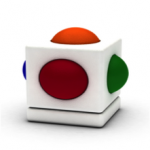 Skoog is basically a musical instrument. It is designed for inclusive music making, enabling children with SEN to experiment with sound expressively. It connects to iPad via Bluetooth and comes with its own app.
Skoog is basically a musical instrument. It is designed for inclusive music making, enabling children with SEN to experiment with sound expressively. It connects to iPad via Bluetooth and comes with its own app.
Cost: Around £200 each
Website: http://skoogmusic.com

